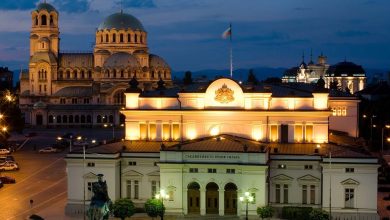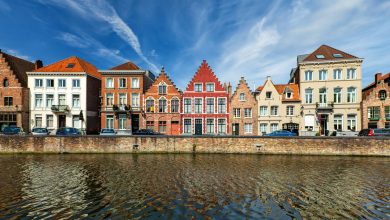Norway Cost of Living in 2024 (Oslo, Bergen etc)

Norway is one of the best countries in the world to live in, but it definitely is not one of the cheapest. What’s the actual cost of living in Norway? This is what I am going share with you in today’s article!
The cost of living in Norway, for a single person, is around €2,400 per month. A couple would end up spending less per person, at around €1,850 per month. Of course, a person’s own spending habits can influence this and increase costs a lot.
We will now get a bit more in-depth and see where these numbers come from. I consider them valid for living anywhere in Norway, from Oslo to Trondheim, Bergen, and so on.
Yes, prices vary a bit from city to city, but overall they’ll be pretty much the same maybe except for the rent.
After all, living in Oslo is more expensive than living in Flekkefjord, but even so, the differences are not huge so expect to pay similar amounts throughout the country. Rent is the only exception here – larger cities have higher rent prices.
Now, I will use my own experience and research for the monthly living expenses in Norway and help you better plan your budget for living a decent life.
Also, I will share all costs in Euros and not NOK, Norway’s currency, in order to make it easier to follow by those who are not living in the country already.
Norway: Rental Costs

These are your highest monthly costs, no matter where you live. Larger cities have higher prices, while smaller towns can offer some surprisingly low rental options.
Norway is not a cheap country to rent in, as you can see in my examples of costs below:
- for a shared room in an apartment/building: around €600 Euros/month.
- for a 1-bedroom apartment: anything between €1,200 – €1,500 / month.
- for a 2-bedroom apartment: between €1,600 – €2,000/month.
Generally speaking, Oslo has the highest cost of rent in Norway, so expect to pay some 50 to 100 Euros more here than in other cities.
Norway: Cost of Utilities
Utilities are, like most things here, pretty expensive. Fortunately, some owners already include them in the monthly rent. Or at least some of them do – usually heating and water.
Make sure to ask before signing your contract, because knowing if you have these costs included is very important, as they can greatly impact your monthly living expenses.
For an estimate on how much you’d spend otherwise, here is how much I think you’ll spend on utilities
- between €150 – €275 per month, mostly influenced by the size of your home and how warm you keep your room during the winter (warmer=$$$).
Sim Card Plan: Around 40 Euros / Month (includes around 20GB of internet, unlimited calls and texts)
Internet: Around 50 Euros per month for a decent, 100 Mbps connection or faster. Norway has great internet – you can check out the average internet speed in Europe here.
Norway: Food Costs

These costs are the most difficult to estimate, in my opinion. Food is expensive in Norway, but eating out is even more so.
Therefore, depending on your eating habits, the monthly food budget can go up or down quite a bit.
Plus, food has been affected by the huge recent inflation in Norway. But at least the salaries in Norway kept up with them, so you won’t really feel the increase.
All in all, I think that a single person will spend around €500 per month on food in Norway, including eating out once a week. Couples will spend a bit less, at around €850/month.
Now let’s check out some examples of prices for various products you can find here:
- 1 Liter of milk – €2.2
- 1 Loaf of bread – €2.3
- 12 eggs – €4.6
- Local Cheese (1kg) – €14 (although prices vary a lot)
- Chicken breasts (1kg) – €15
- Potatoes (1kg): €1.9
- Tomatoes (1kg): €2.7
- Apples (1kg): €2.7
- Bananas (1kg): €2.5
- Oranges (1kg): €2.5
- Bottled water (1.5 liters): €2.1
- Beer (store-brought): €2.7
- Wine (store-brought): €14 (prices vary a lot here as well)
Restaurant prices in Norway
Eating out is extremely expensive compared to other countries in Europe. While you can still find a daily menu for €10 here and there, don’t expect to eat out cheaply.
Meal for 2 in regular restaurant, with a drink included: 40 – 50 Euros
Meal for 2 in a better restaurant, with drinks included: 90 Euros and above
Beer in a restaurant: 8 Euros
Bottle of juice: 3 Euros
Cappuccino or Latte: 4.1 Euros
As you can see, if you eat out often, you will break the budget easily. But if you stick to eating out once per week or less, you can make ends meet on my estimated budget above.
Norway: Other Expenses

All the expenses listed above can be considered the basic ones and having them covered is a must.
But there are also plenty of other things that you will spend money on, and here sky is the limit without a doubt.
These include buying clothes, entertainment, buying things for your home, health-related costs and transportation-related expenses.
They can add up easily, but you can adjust them based on your needs in most cases.
And while it’s really difficult to estimate what you’ll be spending in these areas, here are some of the more common expenses:
- 1 ticket for public transportation: 3.5 Euros
- monthly public transport pass: 80 Euros
- Gasoline: 1.9 Eur / liter
- Movie ticket: 15 Euros
- Gym Membership (1 month): 45 Euros
Do you need a car when living in Norway?
Owning a car is not a necessity in Norway. It gives you advantages in terms of mobility, as the weather is pretty cold, but unless you have to commute to work, you can do well without a car in Norway.
Even if you have to commute, you will have trains and buses to choose from, so the car isn’t a must.
During our stay here, we didn’t own a car and did everything using public transportation, biking and walking. It was a pleasant experience and even though a car does bring some comfort, we never really missed one.
All cities and towns here in Norway are very pedestrian-friendly and the public transportation network works like a charm.
Estimated monthly living cost in Norway
So, adding everything above up (and trying to estimate some other expenses, like the ones in the “other” category), we end up with this calculation when it comes to the cost of living for a single person in Norway:
Rent & Utilities (internet & TV included): 1,500 Euros / month
Food & Eating out: 500 Euros / month
Other expenses: 400 Euros / month
____________________
TOTAL: 2,400 Euros / month
Consider my recommended amount above closer to the minimum amount required to live a decent life here in Norway. If you have more, you’ll do much better, especially in the food category.
If you have nothing against sharing an apartment with another person, you could cut anything between 500 to 1,000 Euros off your monthly bills from the reduced rental costs alone.
This also works in favor of couples, where the average cost of living drops to €1,850/month per person, for an estimated total of €3,700.

I have to repeat: these costs and the monthly budget shared for one or two persons above can be considered close to the minimum needed.
While not at the bottom, based on my own experience, it’s a budget that doesn’t really offer you a lot to play with. But you will live a decent, although a bit modest life!
Conclusion

While Norway is definitely not one of the cheapest places to live in – no matter if you compare it with the rest of Europe or the rest of the world – the truth is that the standard of living is actually high and salaries are up there to help people afford these seemingly insane prices.
I would say that even though costs are still increasing (with the accommodation costs exploding), the increase has slowed down this year so far and I don’t think that things will become much more expensive in the future.
Over to you now: do you have any comments to make regarding the costs and estimations here? Maybe extra questions to ask about today’s topic? If you do, don’t hesitate to let us all know by commenting below!




Most of the info provided in this article is inaccurate and sort of misleading. Costs are way higher for accommodation. Salary adjustment definitely does not keep up with the inflation.
While the food, groceries.. etc went up by 15%, salary increases barely made a significant increase, many got 5% or less in 2022 in salary increases, not to mention that employers are not bound by law to adjust/increase salaries due to inflation to begin with.
It would be even more helpful if you could share some numbers too. I am doing my best to keep the article up to date, but it’s a bit more difficult in an economy that moves as quickly as it happens currently.
I never said that the companies are bound by law to keep up with inflation, just that the general feeling is that they did manage to keep up – at least when compared to other parts of the world.